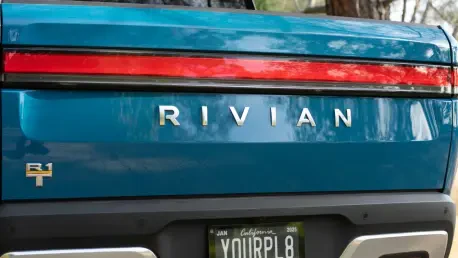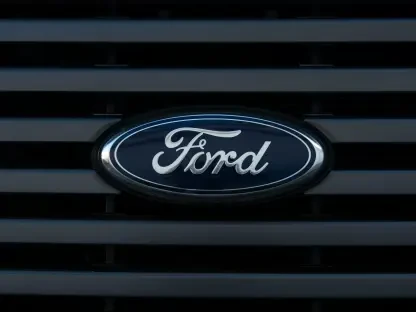The electric vehicle (EV) industry is experiencing profound innovations, with companies like Tesla Inc. and Rivian leading the charge. These industry frontrunners are setting new benchmarks through their technological advancements, financial strategies, regulatory engagements, and competitive positioning. This article explores how Tesla and Rivian are shaping the EV industry’s future and what their efforts mean for the broader market and consumers.
Tesla’s Innovations and Market Influence
Tesla has consistently been a trailblazer in the EV sector, constantly pushing the boundaries of what electric vehicles can achieve. This commitment to innovation is reflected in its ambitious roadmap for autonomous driving, high-performance batteries, and user-centric features integrated into its vehicles. Tesla’s ability to leverage technology to enhance vehicle performance and driver experience continues to set it apart from traditional automakers.
A standout aspect of Tesla’s strategy is its focus on emissions credits, which not only provides substantial financial advantages but also influences regulatory dynamics. In regions like Washington, Tesla’s dominance in emissions credits has underscored its influence on local and global EV policies. The company’s market presence in Washington, which accounted for approximately 10 percent of vehicle sales last year, highlights its strategic importance in the region.
Tesla’s ability to navigate and shape regulatory frameworks is critical to its market influence. Washington’s phased approach to eliminating gas vehicles by 2035, beginning with increased targets for electric and plug-in hybrid vehicles, presents both opportunities and challenges. Tesla’s strategic emphasis on emissions credits has been pivotal, providing a substantial revenue stream while positioning the company favorably within these evolving regulatory landscapes.
Financial Strategies and Market Dynamics
Tesla’s financial strategies exhibit a blend of innovation and adaptability, particularly highlighted by its recent introduction of a five-year, zero-interest financing deal for Model Y vehicles in China. This initiative, which applies to all Model Y variants through June 30, aims to boost sales amidst fierce competition in the Chinese EV market. By offering such customer-centric financing options, Tesla demonstrates its responsiveness to market demands and its capability to maintain a competitive edge.
The significance of emissions credits in Tesla’s financial stability cannot be overstated. Last year, these credits were valued globally at approximately $1.79 billion. However, the proposed 10 percent tax on emissions credits in Washington represents a new fiscal challenge for Tesla. This tax could impact the company’s financial landscape, compelling it to devise new strategies to protect its market position while navigating the regulatory environment.
Despite this potential setback, Tesla’s strategic adaptability remains evident, notably in its capacity to adjust credit prices and possibly transfer the tax burden to automakers purchasing credits. This ability to pivot and adapt is essential for Tesla as it continues to solidify its market presence and financial stability in a competitive industry marked by rapid regulatory changes and economic considerations.
Rivian’s Technological Advancements
Rivian, a newer entrant to the EV market, is making significant strides through its technological innovations and strategic partnerships. The appointment of Aidan Gomez, co-founder and CEO of AI startup Cohere, to Rivian’s board is a clear indication of the company’s dedication to advancing its AI capabilities. Gomez’s expertise in generative AI and AI foundation models is expected to enhance Rivian’s vehicle autonomy and customer experience significantly.
Partnerships play a crucial role in Rivian’s strategy. Its collaboration with Volkswagen Group in a $5.8 billion joint venture aims to develop advanced automotive software and AI-driven autonomy, underscoring Rivian’s commitment to technological excellence. Such strategic collaborations are vital for Rivian as it seeks to establish a strong foothold in the EV market and differentiate itself from established competitors.
Rivian’s investment in AI, including the development of an AI assistant for its EVs, is a testament to its forward-thinking approach. Industry analysts, like Morgan Stanley’s Adam Jonas, view Rivian’s focus on AI-driven autonomy as a key factor that sets it apart in the competitive landscape. By leveraging AI and technology, Rivian is positioning itself as a leader in both EV manufacturing and the broader tech-driven automotive ecosystem.
Strategic Partnerships and AI Integration
The integration of artificial intelligence (AI) into Rivian’s electric vehicles through collaborative ventures is transforming the potential of smart vehicles. These investments in AI-driven autonomy platforms not only differentiate Rivian from traditional automakers but also attract considerable interest from tech-savvy consumers. The synergy between Rivian and tech leaders is a strategic move that enhances its market position.
Rivian’s mission to integrate advanced AI systems into its vehicles is evident in its strategic collaborations, like the joint venture with Volkswagen Group. Such partnerships are essential for developing cutting-edge automotive software that pushes industry boundaries. These efforts enable Rivian to offer innovative features, enhancing the overall driving experience while positioning the company as a key player in the evolving automotive landscape.
The focus on AI integration extends beyond just driving autonomy; it encompasses comprehensive vehicle management systems that enhance safety, efficiency, and user experience. These advancements are crucial as Rivian seeks to establish itself not just as a car manufacturer but as a tech-driven company capable of competing with both automotive and tech giants. This holistic approach positions Rivian favorably in a market increasingly driven by technology.
Regulatory Engagement and Market Expansion
Navigating complex regulatory landscapes is crucial for both Tesla and Rivian as they seek to expand their market reach. Tesla’s involvement in Washington’s emissions credit taxation debate exemplifies the ongoing dialogue between industry leaders and policymakers to shape the future of sustainable transportation. Such engagements are pivotal in creating a favorable environment for EV adoption, influencing regulatory policies worldwide.
Washington’s phased approach to eliminating gas vehicles by 2035 impacts Tesla’s strategic initiatives and market strategies. These regulations necessitate continuous innovation and adaptation, driving Tesla to align its operations with evolving standards. The interaction between legislative frameworks and corporate strategies illustrates the dynamic nature of the EV market, where companies must remain agile to succeed.
Rivian, similarly, must navigate these regulatory landscapes to ensure market expansion. Its strategic decisions, like appointing AI experts and forming partnerships, are influenced by the need to comply with and shape these evolving regulations. This engagement not only aids in market expansion but also establishes Rivian as a proactive participant in the global shift towards sustainable electric mobility.
Competitive Positioning and Customer Incentives
In response to heightened competition, Tesla has introduced various customer-centric incentives designed to enhance customer value and reinforce its competitive position. Initiatives like insurance subsidies for the Model 3 and new paint options for the Model Y are strategic moves to attract and retain customers in key markets like China. These offers are essential for maintaining market leadership in a rapidly evolving industry.
Rivian’s emphasis on technological excellence and strategic partnerships complements Tesla’s customer-focused approaches. By focusing on advanced AI and forming alliances with industry giants, Rivian is carving out a distinct niche in the EV market. These combined efforts of Tesla and Rivian elevate industry standards and accelerate the transition towards electric mobility.
The dynamic interaction between market competition and customer incentives drives innovation and growth within the EV sector. As Tesla and Rivian each employ unique strategies, their competitive positioning fosters a robust market environment that benefits consumers through improved products and services. This competition underscores the importance of continued innovation and customer engagement to remain relevant and successful in the evolving automotive landscape.
Hyundai’s Strategic Moves and Industry Implications
While Tesla and Rivian are major forces in the EV industry, other players like Hyundai are also making significant strategic moves. Hyundai’s memorandum of understanding with Posco Holdings to construct a U.S. steel plant reflects its commitment to localizing production and mitigating tariff impacts. This partnership, facilitated by a three-month suspension of tariffs, highlights Hyundai’s proactive efforts to stabilize its supply chain.
Hyundai’s investment in a U.S. steel plant represents a broader $21 billion initiative to enhance manufacturing capabilities in the U.S., particularly in Georgia and Alabama. By localizing steel production, Hyundai aims to reduce dependence on imports and align with domestic production goals, thereby strengthening its market position amidst international trade uncertainties.
These efforts by Hyundai illustrate the broader industry trend towards resilience and sustainability. The company’s proactive stance, including initiatives like the Hyundai Assurance Program, emphasizes price stability despite looming tariffs. This strategic approach aims to ensure market stability and reinforce Hyundai’s competitive positioning in the evolving EV landscape.
Influences Shaping the EV Landscape
The electric vehicle (EV) industry is undergoing significant transformations, spurred on by pioneers like Tesla Inc. and Rivian. These leading firms are not only pushing the envelope with their technological innovations but are also redefining financial strategies, engaging in regulatory discussions, and carefully positioning themselves in the competitive landscape. Tesla, known for its groundbreaking advancements in battery technology and autopilot systems, continues to dominate the market, influencing both regulatory policies and consumer expectations.
Rivian, on the other hand, is making waves with its focus on electric trucks and SUVs, targeting adventure and sustainability enthusiasts. Rivian’s unique positioning and successful IPO have attracted substantial investor interest, indicating strong market optimism about its future prospects. The efforts of these key players are instrumental in shaping the future of the EV industry. Their relentless pursuit of innovation and excellence sets new industry standards and compels other companies to elevate their game.
By driving technological advancements and scaling production capacities, Tesla and Rivian are not just shaping the industry; they’re making electric vehicles more accessible to the average consumer. Their robust engagements in policy discussions also help in creating a more EV-friendly environment, thereby fostering broader market adoption. This ongoing evolution reflects a promising future for the EV industry, one where consumers can expect more choices, better technologies, and enhanced sustainability.









